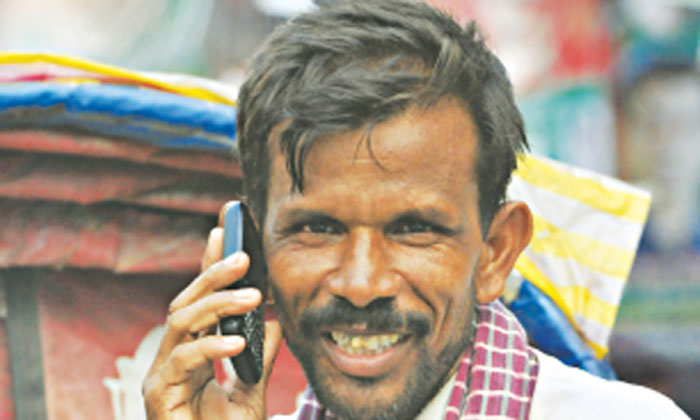Dhaka is a city for rickshaw-pullers and they are becoming smarts. Most of the rickshaw-pullers like Multimedia Phone or smartphone. They use it for watching video and medium for communication. They use mostly cheap mobile phone with video support.
There is an interesting report.76% of Dhaka`s rickshaw-pullers send home money by cell phone.
This reduces risks and cuts down on costs.
This was revealed in a survey conducted from March to June last year by Professor Salahuddin M Aminuzzaman of Dhaka University`s public administration department.
In the survey conducted on 461 rickshaw-pullers in various places of Dhaka, 350 of them used their cell phones to send money home. Most of them were from the chars, of river islands, of Rangpur, Kurigram, Jamalpur and Sirajganj. They each sent, on average, Tk 981 home every week.
Professor Salahuddin said, “This survey was carried out to determine how effective Bangladesh Bank`s efforts were concerning inclusive banking, that is, bringing marginalised people under the banking system. I was amazed at the extensive use of banking facilities. I presume by now an even higher number of rickshaw-pullers have availed these facilities.”
Bangladesh Bank undertook the initiative to start banking services through the cell phone in 2008. On 9 September Bangladesh Bank received the Alliance for Financial Inclusion (AFI) policy award. AFI is the alliance of regulatory bodies of central banks and the financial sector worldwide.
Following the survey, this correspondent spoke to at least 10 rickshaw-pullers of Farmgate and Manipuripara in the city on Wednesday. Eight of them used cell phones to send money home. One of them was Zainul Abedin. He was from the village Jaipur of Parbati upazila, Dinajpur and has been plying rickshaws for the last 12 years. He said, “If I want, I can send money home right away. I send money home after every two or three days now.”
The rickshaw-pullers said that sending money by cell phone saved them a lot of trouble. Before they would have to send money through people and it often would get lost. It was difficult sending money home if sudden emergencies cropped up. It was also risky carrying money oneself.
Abdul Latif is from the village Dulali of Kaliganj upazila, Lalmonirhat district. He has been plying a rickshaw in Dhaka for two and a half years. He says when he goes home now, he just carries the bus fare and a little extra spending money.
Cell phone technology has done away with distance. A total of 89% of the rickshaw pullers in the survey said it took them a matter of 10 to 15 minutes to send money home now. And 11% said it took them more than 15 minutes.
The rickshaw-pullers said they go to any agents shop to send the money. Back home the family members can pick it up from the agent in the village. A total of 80% of the rickshaw-pullers in the survey were married. Of them 52% sent the money to their parents and 32% to their wives. Professor Salahuddin said that the destination of the money depicted the strong social fabric of the country.
The money sent to a family is used for several purposes. The survey shows that 75% of the money sent by some is used on purchasing food and other household expenses. Then for others, 31% is used on children`s schooling; 35% is used for buying land; 32% on small investments, etc. They money is also used to repay debts.
Hossain Zillur Rahman, executive chairman of Power and Participation Research Centre (PPRC) felt that the picture which emerges from the use of technology is an example of people`s empowerment. He said that this had consolidated the poor people`s struggle for survival. When the earning member of the family is away, the family becomes helpless, but this easy method of transferring capital will lessen that helplessness. It has a very positive impact on rural economy.
Economist Zillur Rahman said the use of large sums of money on children`s studies will play a role in the expansion of education. He said, the survey reflects aspirations for a relatively better life

